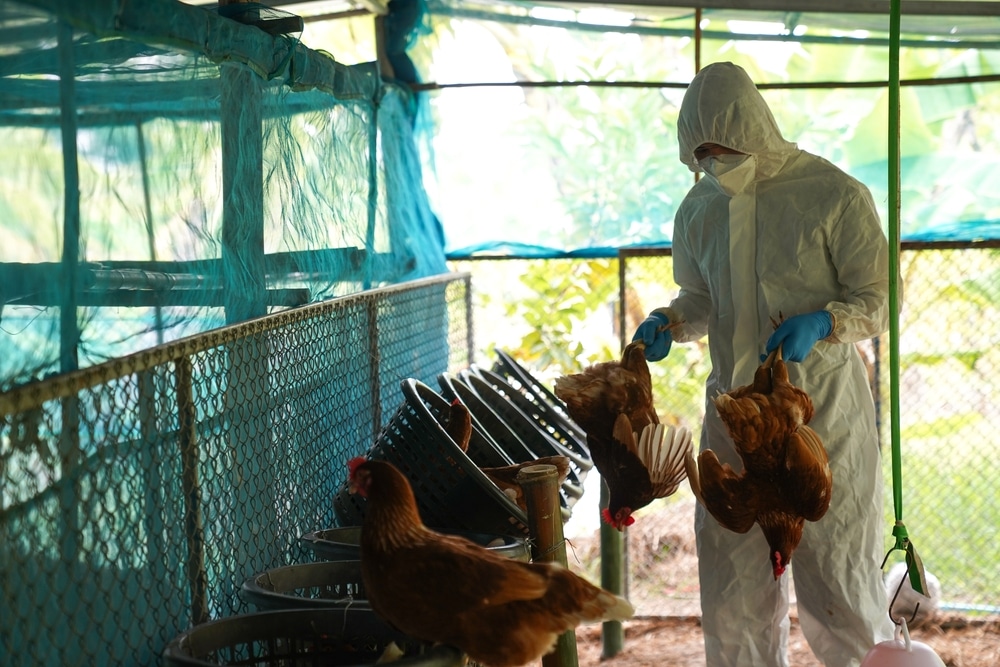Earlier this month we reported how nearly 1 million chickens on a Minnesota egg farm would be slaughtered in hopes to stop the spread of the highly contagious bird flu after it was confirmed there.
The U.S. Department of Agriculture announced that the virus was found at a farm in Wright County, Minnesota, as well as in three smaller flocks in South Dakota and Iowa. Whenever the highly pathogenic avian influenza virus is detected on a farm, the entire flock is killed as to keep it from spreading to other farms.
Now a new report indicates that an additional 1.2 million chickens will be slaughtered to prevent the spread of the bird flu after the virus was confirmed on an Iowa egg farm in the second massive case this week.
The Iowa Department of Agriculture and Land Stewardship announced the latest bird flu infection at a farm in Taylor County Friday, and Iowa’s governor immediately declared a disaster there to make sure the state has the resources to respond quickly.
The Iowa case is just the latest one in the outbreak that began early last year and has prompted officials to kill a total of nearly 63 million birds. Earlier this week, 1 million chickens were killed on a Minnesota egg farm. But the vast majority of the cases, or nearly 58 million birds, occurred last year
Anytime a case of bird flu is found the entire flock is killed to help keep the highly contagious virus from spreading to another farm. The U.S. Department of Agriculture has been finding fewer wild birds carrying the virus this year, which suggests that some ducks and geese may be developing immunity.
Farmers also have been working hard to keep the virus off their farms, and the government has been trying to respond quickly anytime bird flu is found.
Iowa remains the hardest-hit state in the nation, with more than 17 million birds killed there since the outbreak began. The state is the nation’s leading egg producer and egg farms tend to have the most birds. In one case last year, 5 million chickens were slaughtered on a single Iowa egg farm.
Nebraska comes next with more than 6.7 million birds killed, followed by Colorado’s 6.26 million and Minnesota’s 5.6 million. Most of the recent cases this fall have been found in Minnesota, South Dakota, and Iowa along one of the major migratory paths ducks and geese follow as they fly south for winter.
The virus is spread easily by the droppings of those wild birds that can be tracked onto farms, and there has been an expected uptick in cases since the fall migration began.
Poultry and egg farmers try to keep the virus from reaching their farms by requiring workers to shower and change clothes before they enter barns. Trucks are also sanitized before they enter the farm, and separate sets of tools are kept for each barn.










